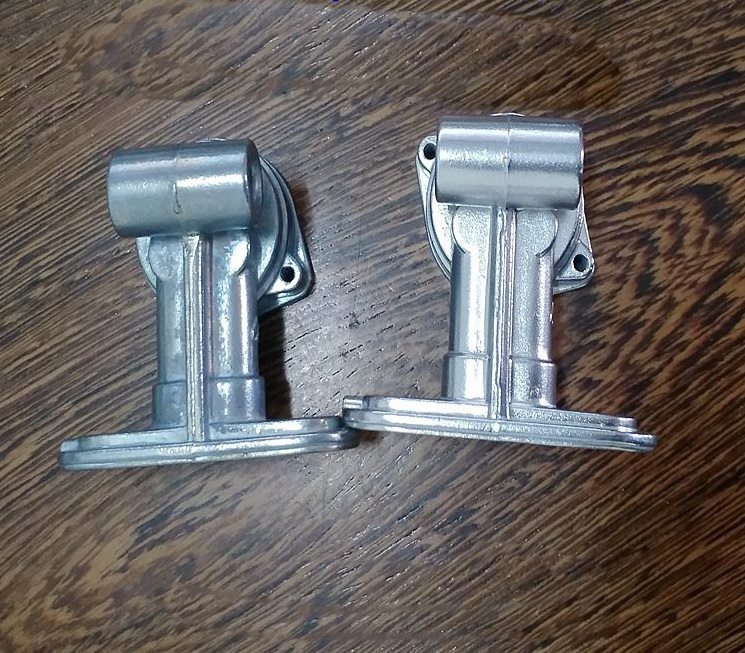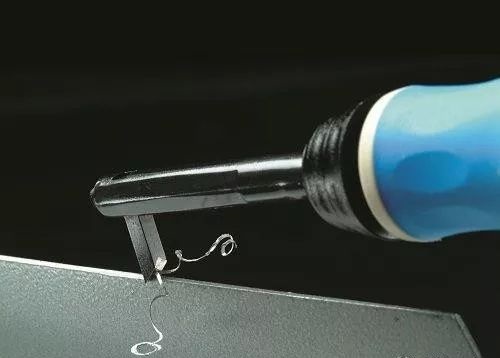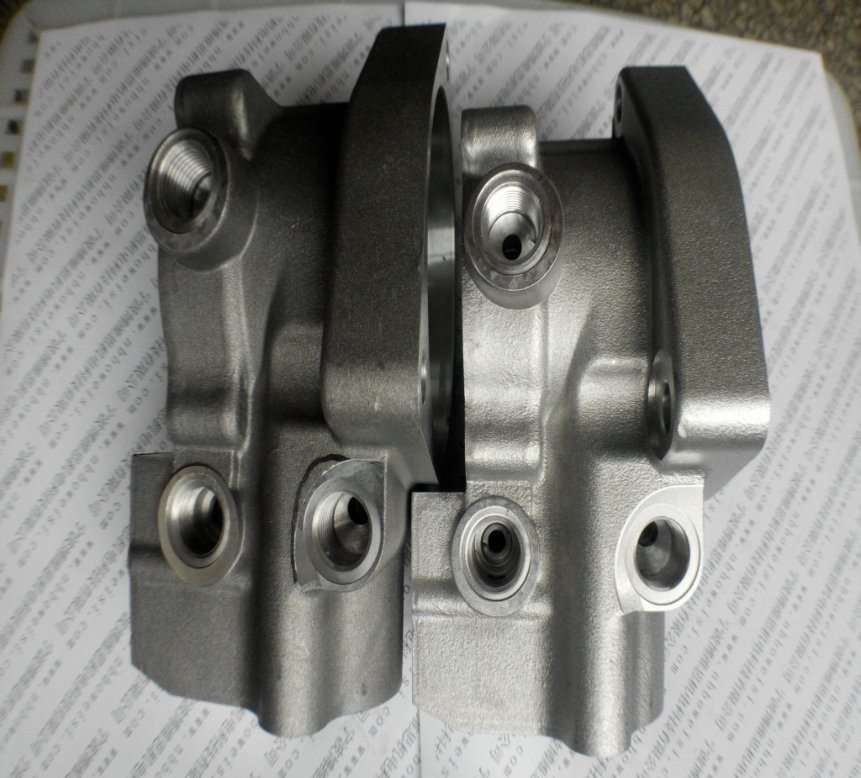What are the Methods for Deburring Parts?
 Nov 04,2022
Nov 04,2022

Burrs are ubiquitous in the metal fabrication process. No matter how advanced and sophisticated equipment you use, it will be born with the product. It is mainly due to the plastic deformation of the material and an excess iron filings generated on the edge of the processed material, especially the material with good ductility or toughness, which is particularly prone to burrs.
The types of burrs mainly include flash burrs, sharp corner burrs, splashes and other protruding excess metal residues that do not meet the product design requirements. In CNC machining services, so far there is no effective method to eliminate it in the production process, so in order to ensure the design requirements of the product, the engineers only work hard on the removal of the back-end, so far for different products different There are many methods and equipment for deburring.

4 levels of deburring
1. Coarse (hard contact)
Belonging to this category are cutting, grinding, filing and scraping.
2. Ordinary grade (soft touch)
Belonging to this category are belt grinding, grinding, elastic grinding wheel grinding and polishing.
3. Precision grade (flexible contact)
Belonging to this category are flushing, electrochemical machining, electrolytic grinding, and rolling.
4. Super Precision (Precision Contact)
In this category, there are abrasive flow deburring, magnetic grinding deburring, electrolytic deburring, thermal energy deburring and dense radium powerful ultrasonic deburring, etc. These deburring methods can obtain sufficient machining accuracy of parts.
When we choose the deburring method, we must consider many factors, such as the material characteristics of the part, the structural shape, the size and precision of the size, and especially the changes in surface roughness, dimensional tolerance, deformation and residual stress.

Let's first look at the magical effect of electrolysis to remove burrs
The so-called electrolytic deburring is a chemical deburring method, which can remove burrs after machining, grinding and stamping, and round or chamfer the sharp edges of metal parts.
An electrolytic machining method that uses electrolysis to remove burrs from metal parts, abbreviated as ECD in English. Fix the tool cathode (usually made of brass) near the burr part of the workpiece, with a certain gap (usually 0.3-1 mm) between the two. The conductive part of the tool cathode is aligned with the edge of the burr, and the other surfaces are covered with an insulating layer, so that the electrolysis is concentrated on the burr part.

During processing, the tool cathode is connected to the negative pole of the DC power supply, and the workpiece is connected to the positive pole of the DC power supply. The low-pressure electrolyte (usually sodium nitrate or sodium chlorate aqueous solution) with a pressure of 0.1-0.3MPa flows between the workpiece and the cathode. When the DC power supply is turned on, the burr will be removed by anode dissolution and taken away by the electrolyte.
The electrolyte is corrosive to a certain extent, and the workpiece should be cleaned and rust-proofed after deburring. Electrolytic deburring is suitable for removing burrs in hidden parts of intersecting holes or parts with complex shapes, with high production efficiency, and the deburring time is generally only a few seconds to tens of seconds.
This method is often used for deburring of gears, splines, connecting rods, valve bodies and crankshaft oil passage holes, etc., as well as for rounding sharp corners. The disadvantage is that the vicinity of the burr of the parts is also subjected to electrolysis, the surface will lose its original luster, and even affect the dimensional accuracy.
4 Industrial-Grade Methods for Deburring
Of course, in addition to electrolytic deburring, there are the following special deburring methods:
1. Abrasive flow deburring
Abrasive flow machining technology is a new finishing and deburring process developed in other countries in the late 1970s. This process is especially suitable for burrs that have just entered the finishing stage, but for small and long holes and metals with unreachable bottoms. Molds, etc. are not suitable for processing.
2. Magnetic grinding for deburring
This method originated in Eastern European countries such as the former Soviet Union and Bulgaria in the 1960s. In the mid-1980s, JRC made in-depth research on its mechanism and application.
During magnetic grinding, the workpiece is placed in the magnetic field formed by the two magnetic poles, and the magnetic abrasive is placed in the gap between the workpiece and the magnetic pole. Brush, when the workpiece rotates in the magnetic field for axial vibration, the workpiece and the abrasive move relatively, and the abrasive brush grinds the surface of the workpiece; the magnetic grinding method can grind and deburr parts efficiently and quickly, and is suitable for Parts of various materials, various sizes and various structures are a finishing method with low investment, high efficiency, wide application and good quality.
At present, developed countries can grind and deburr the inner and outer surfaces of rotating bodies, flat parts, gear teeth, complex profiles, etc., remove oxide skin on wires and wires, and clean printed circuit boards.
3. Thermal deburring
Thermal deburring (TED) is to burn off the burrs with the high temperature generated by the deflagration of the mixture of oxyhydrogen gas or oxygen and natural gas. It is to pass oxygen and oxygen or natural gas and oxygen into a closed container, ignited by a spark plug, so that the mixture detonates and releases a large amount of heat energy in an instant to remove burrs. However, after the workpiece is detonated and burned, its oxidized powder will adhere to the surface of the workpiece, which must be cleaned or pickled.
4. Dense radium powerful ultrasonic deburring
The dense radium powerful ultrasonic deburring technology is a deburring method that has become popular in recent years. Only the attached cleaning efficiency is 10 to 20 times that of the ordinary ultrasonic cleaning machine. It can be done in 5 to 15 minutes at the same time.
10 common ways to remove burrs
Here are 10 of the most common ways to remove burrs:
1) Manual deburring
This is also a method commonly used by general enterprises, using files, sandpaper, grinding heads, etc. as auxiliary tools. The file has manual file and pneumatic stagger.
The labor cost is more expensive, the efficiency is not very high, and it is difficult to remove complex cross holes. The technical requirements for workers are not very high, and it is suitable for products with small burrs and simple product structure.
2) Die deburring
Deburring is carried out by using a production die and a punch.
A certain amount of die (rough die + fine die) production fee is required, and a shaping die may also be required. It is suitable for products with simple parting surfaces, and the efficiency and deburring effect are better than those of manual work.
3) Grinding and deburring
This type of deburring includes vibration, sandblasting, rollers, etc., and is currently used by many companies.
There is a problem that the removal is not very clean, and it may be necessary to manually process the residual burr or cooperate with other methods to deburr. Suitable for small products in larger batches.
4) Freeze deburring
Use cooling to quickly embrittle the burrs, and then spray projectiles to remove the burrs.
The price of the equipment is about 200,000 or 300,000; it is suitable for products with small burr wall thickness and small products.
5) Hot blast deburring
Also called thermal deburring, explosion deburring. By introducing some flammable gas into an equipment furnace, and then through the action of some media and conditions, the gas is instantly exploded, and the energy generated by the explosion is used to dissolve and remove the burr.
Expensive equipment (millions of dollars), high technical requirements, low efficiency, side effects (rusting, deformation); mainly used in some high-precision parts and components, such as automotive and aerospace and other precision parts.
6) Deburring of engraving machine
The price of the equipment is not very expensive (tens of thousands), and it is suitable for products with simple space structure and simple and regular deburring positions.
7) Chemical deburring
Using the principle of electrochemical reaction, the parts made of metal materials can be automatically and selectively deburred.
It is suitable for internal burrs that are difficult to remove, and suitable for small burrs (thickness less than 7mm) of products such as pump bodies and valve bodies.
8) Electrolytic deburring
An electrolytic machining method that uses electrolysis to remove burrs from metal parts.
The electrolyte is corrosive to a certain extent, and the vicinity of the burr of the parts is also subjected to electrolysis, and the surface will lose its original luster and even affect the dimensional accuracy. The workpiece should be cleaned and rust-proofed after deburring. Electrolytic deburring is suitable for removing burrs in hidden parts of intersecting holes or parts with complex shapes, with high production efficiency, and the deburring time is generally only a few seconds to tens of seconds. It is suitable for deburring gears, connecting rods, valve bodies and crankshaft oil passage holes, etc., as well as rounding of sharp corners.
9) High pressure water jet deburring
Using water as a medium, it can use its instantaneous impact force to remove burrs and flashes generated after processing, and at the same time, it can achieve the purpose of cleaning.
Expensive equipment, mainly used in the heart of the car and the hydraulic control system of construction machinery.
10) Ultrasonic deburring
Ultrasonic generates instant high pressure to remove burrs.
Mainly for some microscopic burrs. Generally, if the burrs need to be observed with a microscope, you can try to remove them with ultrasonic waves.
The most basic things are the hardest
Doing simple things to the extreme is the attitude towards work. No matter which method is used to remove burrs, Tuofa CNC Machining believes that as an ISO9001 precision parts manufacturer, we strive for 100% customer satisfaction.
 Tel/WeChat:
Tel/WeChat:  Email:
Email: 
 Home
Home
 Innovation of Machining Method for Flat Deep Groove Parts
Innovation of Machining Method for Flat Deep Groove Parts 







